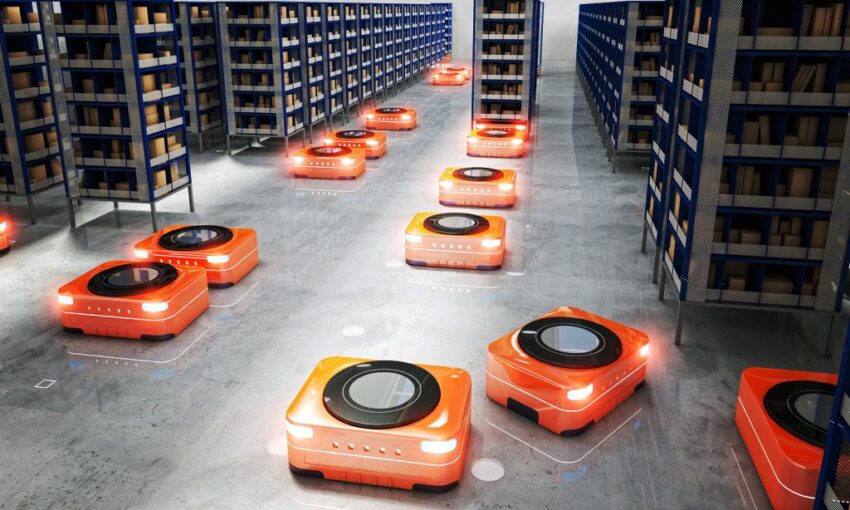Warehouse robotics include autonomous mobile robots, robotic arms, and other industrial robots used for warehouse automation. These robots automate various tasks such as piece picking, packing, palletizing, transportation, and storage. Warehouse robotic arms are able to pick, pack, and palletize a variety of products and ship them for delivery. Autonomous mobile robots are software-controlled robots that can navigate autonomously through unstructured industrial environments without external control or safety mechanisms. They are used for shuttling goods between warehouse areas, loading/unloading trucks, and transportation and sorting of goods.
The global warehouse robotics market is estimated to be valued at US$ 13.18 billion in 2023 and is expected to exhibit a CAGR of 6.7% over the forecast period 2023 to 2030, as highlighted in a new report published by Coherent Market Insights.
Market Dynamics:
The warehouse robotics market is expected to be flourished by the rising demand for automation in e-commerce operations. E-commerce retailers need to rapidly process high volumes of online orders to deliver items to customers within the short delivery windows. This requires organizations to efficiently manage warehouse operations through labor-intensive tasks like picking, sorting, and packing. Adopting warehouse robotics allows e-commerce retailers to reduce costs, improve productivity, minimize human errors, and meet strict delivery timelines. Another key driver is the shortage of labor seen across many countries, which is pushing organizations to automate material handling and logistics activities through robots. This ensures business continuity even during labor shortages. Some of the major autonomous mobile robots and robotic arms vendors are focusing on developing solutions integrated with artificial intelligence, machine learning, and predictive analytics to optimize warehouse workflow processes.
Segment Analysis
The warehouse robotics market can be segmented by robot type, function, application and geography. By robot type, the market is dominated by SCARA robots owing to their easy adaptability, broad range of motion and higher payload capacity. SCARA robots are commonly used for medium to high speed pick, pack and palletizing applications.
By function, mobile robots form the largest segment given their versatility and use across different warehousing tasks involving transportation and movement of inventory, goods and materials within warehouses. Mobile robots find widespread adoption for load transportation, palletizing and depalletizing, picking, packaging and delivery.
PEST Analysis
Political: Supportive government policies and initiatives towards Industry 4.0 technologies such as robotics are boosting market growth. However, regulations around robot safety, data privacy and job security pose challenges.
Economic: Growth of e-commerce is driving demand for automation in warehouses to improve efficiency and reduce costs. However, high initial investment remains a key restraint for small companies to adopt robotics.
Social: Acceptance of robotic technology is increasing among workforce with their ability to undertake repetetive, ergonomically unsafe and hazardous jobs. However, concerns around job losses persists.
Technological: Advancements in areas such as autonomous navigation, machine vision, voice recognition, motion planning and cloud robotics are enhancing capabilities of warehouse robots. Adoption of collaborative robots allows safe human-robot interaction.
Key Takeaways
Global Warehouse Robotics Market Demand is expected to witness high growth between 2023-2030 supported by the exponential growth of e-commerce. The Asia Pacific region currently dominates market with China emerging as the largest market owing to Government incentives for robot adoption and expansion of warehouse capacities among e-tailers and third party logistic players.
Key players operating in the warehouse robotics market are Schneider Electric SE, ABB Ltd., Siemens AG, Eaton Corporation, Honeywell International Inc., Rockwell Automation, Inc., UL LLC (Underwriters Laboratories), Emerson Electric Co., General Electric (GE), Littelfuse, Inc., DuPont de Nemours, Inc., Fluke Corporation, Omicron Electronics GmbH, Megger Group Limited, MSA Safety Incorporated.
ABB Ltd., Siemens AG dominate the mobile robots segment with their product portfolio including automated guided vehicles and carts. Honeywell International is a key player in barcode scanning and voice-directed applications. However, increasing adoption of collaborative robots is opening growth opportunities for emerging players bringing innovations in human-robot interaction.
*Note:
1. Source: Coherent Market Insights, Public sources, Desk research
2. We have leveraged AI tools to mine information and compile it

